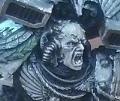| Author |
Message |
 |
|
|
 |
|
Advert
|
Forum adverts like this one are shown to any user who is not logged in. Join us by filling out a tiny 3 field form and you will get your own, free, dakka user account which gives a good range of benefits to you:
- No adverts like this in the forums anymore.
- Times and dates in your local timezone.
- Full tracking of what you have read so you can skip to your first unread post, easily see what has changed since you last logged in, and easily see what is new at a glance.
- Email notifications for threads you want to watch closely.
- Being a part of the oldest wargaming community on the net.
If you are already a member then feel free to login now. |
|
 |
![[Post New]](/s/i/i.gif) 2018/05/22 08:00:22
Subject: Help!! Best Airbrush varnish for protection
|
 |

Regular Dakkanaut
|
Hi Guys,
Ive recently made the switch to priming models with airbrush, i used to prime with rattle can then base with AB but found that as im using white there doesn't seem to be a rattle can brand out there that doesn't clog minor details and of course this has a knock on effect as i airbrush up through the coats.
Now i know that priming with airbrush leaves a much thinner coat and therefore is prone to scratching or chipping, so generally i give each model a good coat of vallejo gloss varnish after the base coats are down and then finish with vallejo matt.
My question is; Is there a better alternative out there? I want a good solid protective layer over the base coat and i generally feel the vallejo is a little too thin.
Can any body help?
|
|
|
 |
 |
![[Post New]](/s/i/i.gif) 2018/05/22 09:24:02
Subject: Help!! Best Airbrush varnish for protection
|
 |

Longtime Dakkanaut
|
The real key to durability is letting your airbrush primer cure properly. 24 hours is ok, 48 is better.
After that, I've found that Winsor & Newton Galleria satin, with about 20% airbrush thinner goes on nice and smooth, and two coats has been adequate for my use. I've had a few of my DMH figs chip, but mostly on the base rim (2p's) and one on the arm from being dropped. If you're not ham fisted you really don't need too thick a coat of varnish.
|
|
|
|
 |
 |
![[Post New]](/s/i/i.gif) 2018/05/22 10:39:45
Subject: Help!! Best Airbrush varnish for protection
|
 |

Regular Dakkanaut
|
winterdyne wrote:The real key to durability is letting your airbrush primer cure properly. 24 hours is ok, 48 is better.
After that, I've found that Winsor & Newton Galleria satin, with about 20% airbrush thinner goes on nice and smooth, and two coats has been adequate for my use. I've had a few of my DMH figs chip, but mostly on the base rim (2p's) and one on the arm from being dropped. If you're not ham fisted you really don't need too thick a coat of varnish.
thats good info, what primer do you use?
|
|
|
 |
 |
![[Post New]](/s/i/i.gif) 2018/05/22 16:09:27
Subject: Help!! Best Airbrush varnish for protection
|
 |

Legendary Master of the Chapter
|
Winterdyne is correct.
But as to airbrushed varnishes
if you have protection and or really good ventilation
i personally love alclad II line of lacqure varnishes.
personally consume way too much of the satin stuff.
|
 Unit1126PLL wrote: Unit1126PLL wrote: Scott-S6 wrote: Scott-S6 wrote:And yet another thread is hijacked for Unit to ask for the same advice, receive the same answers and make the same excuses.
Oh my god I'm becoming martel.
Send help!
|
|
|
 |
 |
![[Post New]](/s/i/i.gif) 2018/05/22 16:17:11
Subject: Help!! Best Airbrush varnish for protection
|
 |

Longtime Dakkanaut
|
I use Vallejo PU Surface primers of various colours. Same rules apply for all:
Clean and degrease parts (soapy water!) before assembly.
Keep hands clean and grease free when assembling.
Prime in two or three thin coats, not thickly.
Don't put it on too dry (dusty) or too wet (runs) should look glossy, not 'wet' and dry to a flatter, satin finish.
LET IT CURE.
Handle as little as possible until topcoats are on - use painting handles, shotglasses with blu-tack, whatever.
Primer that's too thick or too dry will peel easily or wipe off, respectively. There's a bit of an art to it.
Don't worry about adding some airbrush thinner to the primer if you need to. I generally add around 15-20% thinner to the cup. Helps stop tip dry.
|
|
|
|
 |
 |
![[Post New]](/s/i/i.gif) 2018/05/23 09:01:29
Subject: Help!! Best Airbrush varnish for protection
|
 |

Regular Dakkanaut
|
winterdyne wrote:I use Vallejo PU Surface primers of various colours. Same rules apply for all:
Clean and degrease parts (soapy water!) before assembly.
Keep hands clean and grease free when assembling.
Prime in two or three thin coats, not thickly.
Don't put it on too dry (dusty) or too wet (runs) should look glossy, not 'wet' and dry to a flatter, satin finish.
LET IT CURE.
Handle as little as possible until topcoats are on - use painting handles, shotglasses with blu-tack, whatever.
Primer that's too thick or too dry will peel easily or wipe off, respectively. There's a bit of an art to it.
Don't worry about adding some airbrush thinner to the primer if you need to. I generally add around 15-20% thinner to the cup. Helps stop tip dry.
Thanks!
Im quite anal when it comes to the paint process so i appreciate the tips. Im currently flipping between Stylinrez and Vallejo primers but haven't been allowing any cure time, i expect this is why ive been feeling the VA stuff is a little too soft.
I have found that both tend to clog the tip so have been using flow improver, would you recommend thinner over flow improver? if so, any reason why?
|
|
|
 |
 |
![[Post New]](/s/i/i.gif) 2018/05/23 10:26:37
Subject: Help!! Best Airbrush varnish for protection
|
 |

Longtime Dakkanaut
|
If it goes on and doesn't bead away you should be fine. Both work more like gesso than an etching type primer in that they form a skin, and don't actually bond to the substrate.
It's the cure time that's the issue here.
Both are still much softer than enamel primers - so the 'don't handle' caveat still applies until you put a good topcoat on.
|
|
|
|
 |
 |
![[Post New]](/s/i/i.gif) 2018/05/25 07:59:54
Subject: Help!! Best Airbrush varnish for protection
|
 |

Regular Dakkanaut
|
winterdyne wrote:If it goes on and doesn't bead away you should be fine. Both work more like gesso than an etching type primer in that they form a skin, and don't actually bond to the substrate.
It's the cure time that's the issue here.
Both are still much softer than enamel primers - so the 'don't handle' caveat still applies until you put a good topcoat on.
Thanks again winterdyne, I primed last night, 3 coats of VPU, found myself messing around a little with the thinner to paint ratio as i had a few clogs (i use a patriot 105 and was spraying at 25 psi).
Im going to give it 48h to cure then crack on.
|
|
|
 |
 |
![[Post New]](/s/i/i.gif) 2018/05/25 09:24:57
Subject: Re:Help!! Best Airbrush varnish for protection
|
 |

Longtime Dakkanaut
|
Vallejo recommends not using any thinner with their PU primers.
In most cases I had pretty good results without any thinning. But recently I was near the end of a bottle of white, and it was a mess: lots of dry tipping and clogging, a real pain. And with just a little bit of thinning it was a breeze to airbrush (with 0.5mm needle). I didn't notice any difference as far as strength goes (I always let it cure at least a few days).
|
|
|
 |
 |
![[Post New]](/s/i/i.gif) 2018/05/25 09:48:30
Subject: Help!! Best Airbrush varnish for protection
|
 |

Longtime Dakkanaut
|
I have .35 and .4 airbrushes. THe .4 is happier with thicker mixes, but the .35 clogs like a mofo without thinner and a touch of flow improver.
|
|
|
|
 |
 |
![[Post New]](/s/i/i.gif) 2018/06/05 09:02:30
Subject: Re:Help!! Best Airbrush varnish for protection
|
 |

Longtime Dakkanaut
|
Just an update on the Vallejo PU primers:
Yesterday I primed some stuff with the black PU primer. I usually airbrush it straight out of the bottle, and it works pretty well (a little bit dry tipping, but nothing too major). But because of this post I thought I might try to thin it a bit. I added a little bit of flow improver (a lot less than I would do with a normal paint), and the change was quite noticeable. It was a lot smoother to shoot, but more importantly it was much easier to gauge the thickness of my layers, as it was easier to see the gloss you get when the surface is a bit wet (pure primer goes very quickly from too dry to too wet).
After 24h, it looks quite good, and seems pretty durable.
I'm now a bit confused by Vallejo's advice not to thin them.
|
|
|
 |
 |
|
|